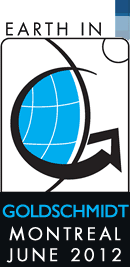Features
Dates & Deadlines
April 20
Early-bird registration deadline
June 1
Hotel reservations
June 11
Online Registration closes
The call for abstracts is now closed.
Themes
Sessions & Descriptions
| < Previous Theme | Theme Overview | Next Theme > |
Theme 1
Solar System Evolution: Nebular Processes, Planet Formation, and Comparative Planetology
Martin Bizzarro, Copenhagen, Denmark,
Phil Bland, Imperial College, UK,
SESSIONS
1a. Nucleosynthetic isotope anomalies; our presolar heritage
Co-convenors:
Nicolas Dauphas (University of Chicago) - dauphas![]() uchicago.edu
uchicago.edu
Larry N. Nittler (Carnegie Institution of Washington) - lnittler![]() ciw.edu
ciw.edu
In recent years, many studies have revealed the presence of nucleosynthetic isotope anomalies for several heavy elements (e.g., Mo, Cr, Ti, Ba) in bulk planetary materials. These anomalies play an important role for tracing the source materials of the solar system as well as relationships between meteorites and planets. Larger anomalies have also been found in acid leachates and refractory minerals in meteorites. In most cases, these isotopic anomalies cannot be related to any known carrier, hinting at the presence of yet undiscovered presolar grains in planetary materials. How isotopic anomalies carried by submicron grains were mapped onto objects up to the size of planets is unknown. This could have involved aerodynamic size-sorting and chemical fractionation related to volatilization/condensation in the protoplanetary disk. We invite submissions related to nucleosynthetic anomalies in solar system materials including the theory of stellar nucleosynthesis, presolar grain studies, and measurements of isotopic anomalies in meteorites.
1b. Early Solar System chronometry – Origin, distribution, and chronological applications of radionuclides
Co-convenors:
Alexander N. Krot (University of Hawaii at Manoa) - sasha![]() higp.hawaii.edu
higp.hawaii.edu
Benjamin Jacobsen (Lawrence Livermore National Laboratory) - jacobsen5![]() llnl.gov
llnl.gov
Jim Connelly (University of Copenhagen) - connelly![]() snm.ku.dk
snm.ku.dk
This session aims to examine the astrophysical sources, distribution and mixing processes of short-lived radionuclides in the early Solar System, and to determine the absolute ages of events that transformed the protosolar molecular cloud of gas and dust into the present planetary system we inhabit. Short-lived radionuclides are produced by nucleosynthesis in different stellar environments and by nuclear reactions induced by the collisions of energetic particles with ambient dust and gas. How these nuclides were admixed and distributed into the nascent solar protoplanetary disk is uncertain, but critical for understanding of the earliest evolution of our Solar System. Absolute ages place the Solar System formation in the context of the evolution of matter from its presolar history to present Earth. Absolute ages of pre-planetary and early planetary materials are determined directly, using decay of long-lived radionuclides and indirectly, using decay of short-lived radionuclides and their calibration against one or more long-lived radionuclide dates. Integration of extinct radionuclide data with extant radionuclide absolute chronology will bring new insights into the origin of the Solar System.
1c. Towards an accurate and precise absolute chronology of the early solar system
(co-hosted by Themes 1 and 17)
Co-convenors:
Yuri Amelin (Autralian National University) - yuri.amelin![]() anu.edu.au
anu.edu.au
Jim Connelly (University of Copenhagen) - connelly![]() snm.ku.dk
snm.ku.dk
SESSION MERGED with 1b
1d. Water and organics in the early solar system
Co-convenors:
Conel Alexander (Carnegie Institution of Washington) - alexander![]() dtm.ciw.edu
dtm.ciw.edu
Ed Young (UCLA) - eyoung![]() ess.ucla.edu
ess.ucla.edu
How the terrestrial planets acquired their volatiles (H, C, N and the noble gases) remains one of the great uncertainties in planet formation. Were the volatiles acquired during accretion or as a late veneer? Were the volatiles in planetesimals that formed in the terrestrial planet region, or in those from the asteroid belt and outer Solar System? How much of the accreted volatiles were subsequently lost by giant impacts and/or hydrodynamic escape? Mike Drake dedicated much of the final years of his life to addressing many of these questions. To mark his untimely death and commemorate his efforts, we would like to dedicate a multidisciplinary session to the exploration of these issues which have obvious implications for the formation of habitable planets, including Earth.
Keynote speaker:
Alex Halliday (Oxford University, UK), alexh![]() earth.ox.ac.uk
earth.ox.ac.uk
1e. Chemical and isotopic constraints on planetary accretion, differentiation and impact chronology
Co-convenors:
Mark Rehkamper (Imperial College, London) - markrehk![]() imperial.ac.uk
imperial.ac.uk
Mathias Willbold (University of Bristol) - M.Willbold![]() bristol.ac.uk
bristol.ac.uk
Maria Schonbachler (university of Manchester) - Maria.Schonbachler![]() manchester.ac.uk
manchester.ac.uk
Chris Dale (University of Durham, UK) - christopher.dale![]() durham.ac.uk
durham.ac.uk
This session seeks to foster an open-minded discussion amongst and between geochemists, planetary scientists and meteoriticists that study planetary accretion and early differentiation from different angles. To this end, we seek to combine contributions that apply constraints from stable and radiogenic isotope systems, microstructural measurements, trace and major element data or partitioning experiments with results from studies that employ dynamical simulations, thermal modelling or astronomical observations.
Keynote speakers:
Alessandro Morbidelli (Observatoire de la Cote d'Azur, Nice), morby![]() oca.eu
oca.eu
Alexander Nemchin (Curtin University of Technology – Perth), A.Nemchin![]() curtin.edu.au
curtin.edu.au
Takafumi Niihara (Lunar and Planetary Institute), niihara![]() lpi.usra.edu
lpi.usra.edu
Edward R.D. Scott (University of Hawaii, Manoa), escott![]() higp.hawaii.edu
higp.hawaii.edu
1f. Chemical differentiation and impact additions to the Moon, Mars, and asteroids
Co-convenors:
Amy Riches (University of Alberta) - ariches![]() ualberta.ca
ualberta.ca
Chris Dale (University of Durham, UK) - christopher.dale![]() durham.ac.uk
durham.ac.uk
Jon Wade (University of Oxford, UK) - jonw![]() earth.ox.ac.uk
earth.ox.ac.uk
SESSION MERGED with 1e
1g. Accessory mineral dating of Solar System processes
(co-hosted by Themes 1 and 2)
Co-convenors:
Desmond Moser (University of Western Ontario, Canada) - desmond.moser![]() uwo.ca
uwo.ca
Aaron Cavosie (University of Puerto Rico – Mayaguez) - aaron.cavosie![]() upr.edu
upr.edu
James Darling (University of Western Ontario, Canada) - jdarli5![]() uwo.ca
uwo.ca
SESSIONMERGED with 1e




